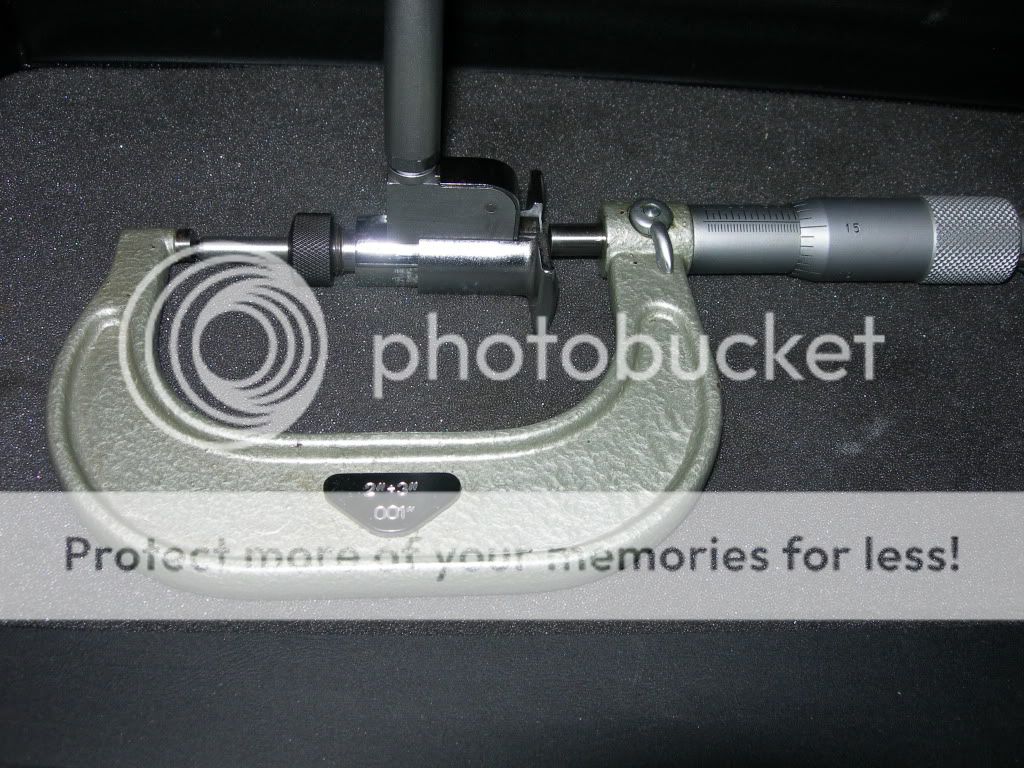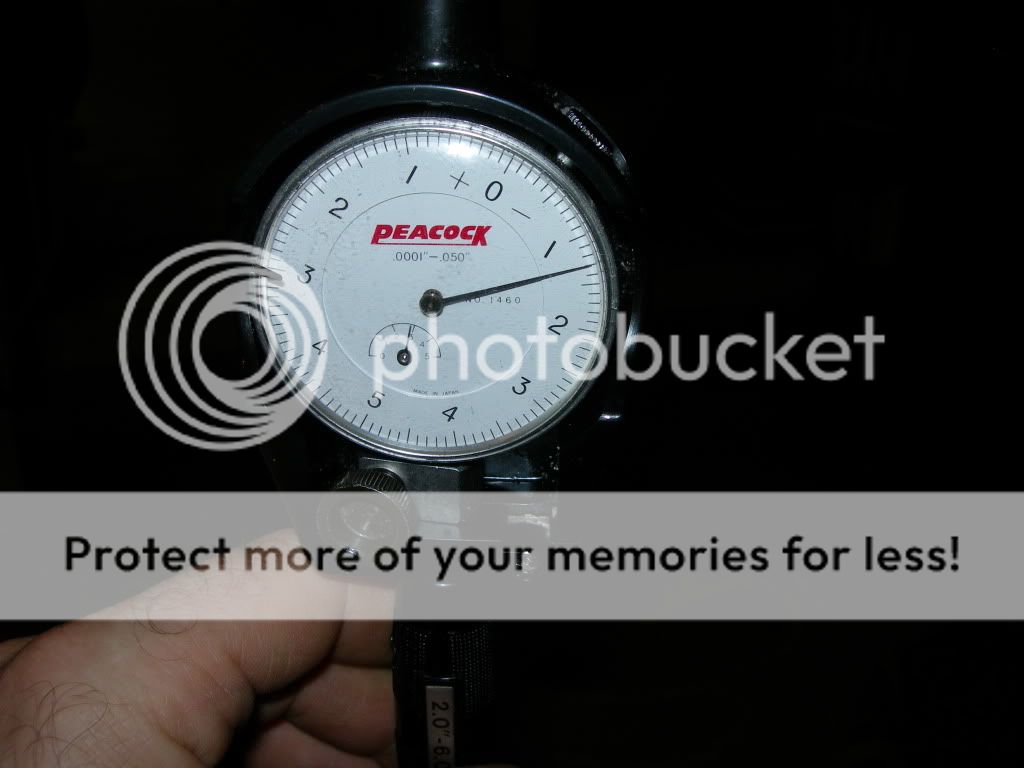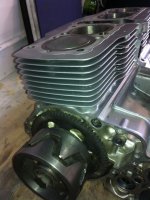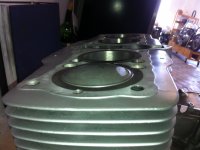OK just looked up 16000, looks a bit like the small AMMCO I have, the 15000 is almost identical to large Sunnen
They don't like being turned much over 400 rpm, slower just takes a bit longer
As your doing the cylinders for yourself the time isn't as important as getting it right
Does your bore gauge measure in ten thousandths on in or thousandths of inch? (or metric?)
Doesn't really matter, set it to the exact size you want with micrometer then hone down to zero.
I know I've taken pictures of setting and use, just not sure if I uploaded all of them to Photobucket
You can probably have one stone 'reversed' if they get tapered so high ends are opposite each other?
Make sure you know roughly where the tight spot on cylinder is and have the stones in that position when adjusting, I've seen 'perfect' cylinders get messed up by having stones in 12/6 or 3/9 positions then adjusting too tight, when they hit the tight spot cylinder comes loose or (didn't happen in any of my classes ;D ) one guy managed to break his wrist when drill kept turning and hone stopped (Don got in real trouble over that one

)
PM me and I'll send e-mail (if you don't already have it or can't find it)
Easier to send pics or video that way, online tutorial 8)
I use a foam pad to support micrometer, it's much easier to set bore gauge head on foam and rock it around to make sure setting is accurate (much easier than having micrometer in a mike stand and holding bore gauge steady)

I also find it much easier to measure the largest part of piston (usually 8~10mm from bottom of skirt) then open mic another 00015" to get clearance
When you put gauge in cylinder you'll see exactly how much too small it is, this was exact piston size

all for now,
PJ








